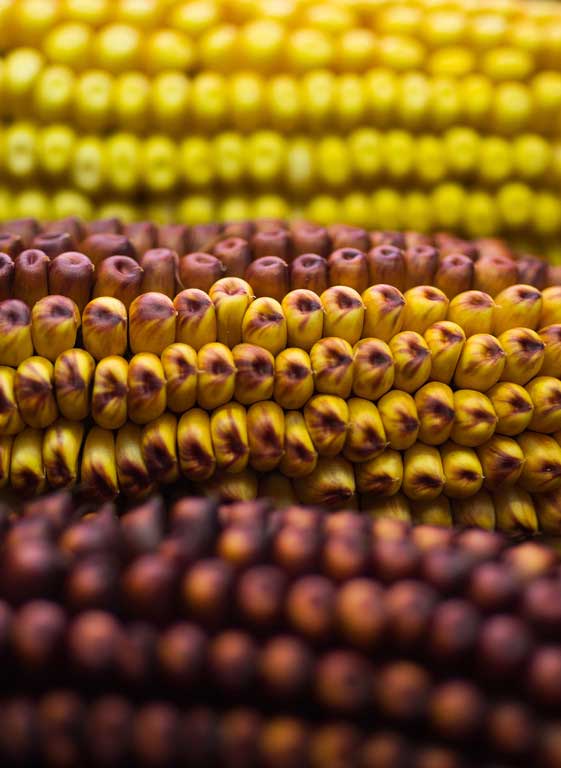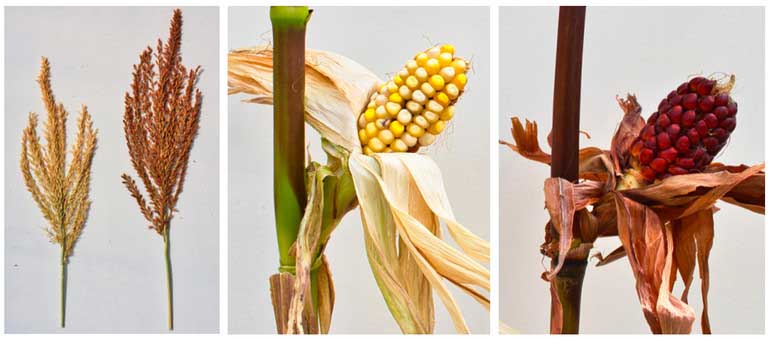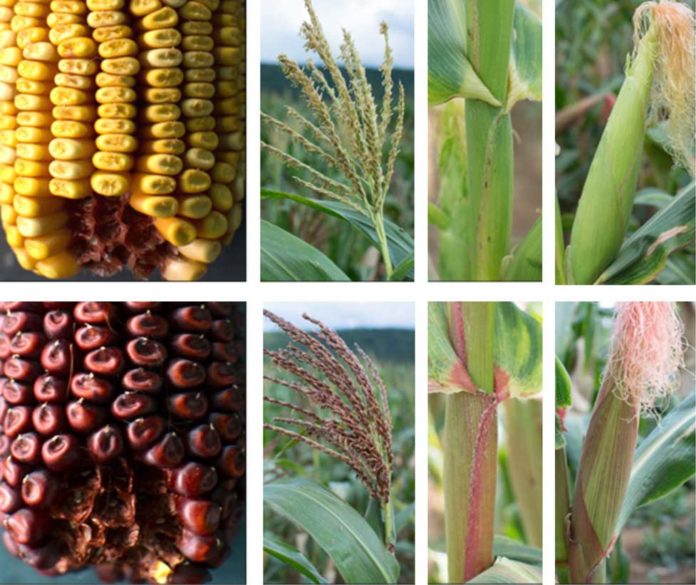Scientists snow have successfully solved a six-decades-old mystery of corn- why red pigments appear on corn sometimes. They solved the mystery while discovering a mutant gene that “turns on” another gene responsible for the red pigments.
The mystery involved a spontaneous gene mutation that causes red pigments to show up in various corn plant tissues, such as kernels, cobs, tassels, silk and even stalks, for a few generations and then disappears in the subsequent progeny. It might seem like a minor concern to the uninitiated, but because corn genetics have long been studied as a model system, the question has significant implications for plant biology.
Surinder Chopra, professor of maize genetics at Penn State said, “In corn, genes involved in pigment biosynthesis have been used in genetic studies for more than a century — pigmentation in corn is a relatively simple trait, which makes it ideal for use as a marker for genetic research. The mutant corn plants were identified in 1960 by Dr. Charles Burnham (University of Minnesota), and that seed was given to one of his students, Derek Styles. We received the seed from Styles in 1997, and we were entrusted to continue the research.”

Utilizing tissues from those cross hybrid plants, and utilizing RNA-sequencing procedures and gene-cloning devices alongside cutting edge sequencing, genetic mapping, and data analysis capacities not accessible to plant geneticists until generally as of late, scientists exposed the culprit in the on-again more, off-once more, red-pigment in corn puzzle. They discovered Ufo1, which is just present in corn, sorghum, rice, and foxtail millet.
But the Ufo1 mutant gene does not actually cause the red pigments to appear in corn — that is caused by a gene called the pericarp color1, or p1. Researchers found that the Ufo1 gene is actually controlled by a transposon — “jumping gene” — that sits close to the Ufo1 gene. Transposons are sequences of DNA that move from one location in the genome to another and can influence the expression of nearby essential genes.
At the point when this transposon is exchanged on, the Ufo1 gene is likewise turned on, which triggers the p1 gene to signal the plant to create the red pigments. However, when the transposon is off, the Ufo1 quality goes quiet thus does the p1-controlled pigment pathway. That is the fundamental reason the Ufo1 gene went unidentified for such a long time and the secret hold on.
Chopra said, “We were able to narrow it down to a single gene out of several thousand genes that are aberrantly expressed in the Ufo1 mutant versus the wild-type plant. It is an incremental discovery, and yet it is a leap in basic science because it is likely to be valuable to plant breeders.”

It is still not entirely clear how Ufo1 interacts with the p1 gene. The discovery’s future significance likely will be less associated with red pigments than what the Ufo1 mutant gene controls in corn plants.
According to Chopra, it may be a “master regulator” that it is under stress, even in the absence of stress. Interestingly, in Ufo1 plants, sugars over-accumulate in leaves, and the content of maysin, a natural insecticide made by corn plants, sharply increases in the silk.
Chopra said, “Learning about what controls the regulation of the normal or the non-mutant Ufo1gene will bring us much closer to a realistic breeding process in which we can tinker with gene expression to get higher maysin content or increased sugar content, which would be important in crop protection from pests and biofuel production, respectively.”
“And, because it has a pronounced effect on the workings of the cellular machinery, we can now understand further the basic molecular pathway that normally happens during stress to a plant. Understanding plant stress resulting from extremes of heat, cold and water is important because of climate change.”
